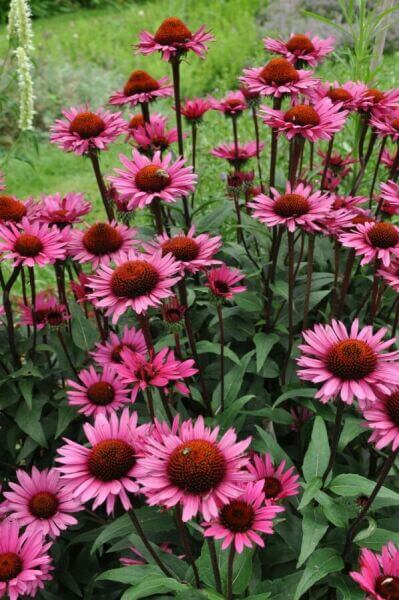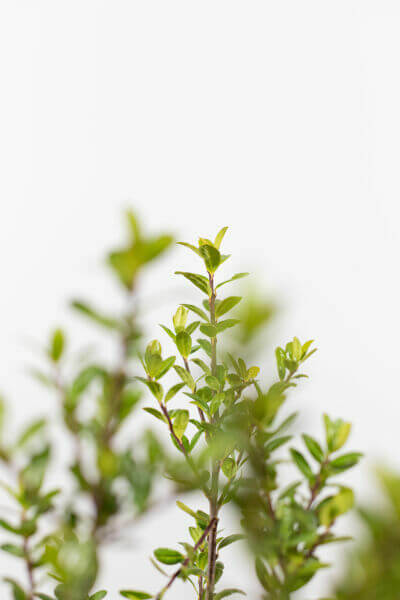Hedging Plants For Autumn Color
Improve your garden's attraction with lavish hedge varieties such as Yew (Taxus), Thuja, Laurel, Photinia, and Bamboo, celebrated for their structural stability and ecological benefits.
Yew and Thuja supply evergreen coverage and winter durability, while Laurel offers fast development and broad, fragrant leaves.
Photinia includes seasonal charm with its dynamic red foliage, and Bamboo provides a low-maintenance, serene atmosphere.
These hedges enhance air quality, decrease sound, and create tranquil, private areas.
Proper planting, spacing, and maintenance make sure energetic growth and environmental consistency.
Explore how these rich ranges can raise your garden's beauty and wellness.
Key Takeaways
Transform Your Garden With Lush Hedge Varieties
- Select Yew for its thick, evergreen development and unrivaled durability.
- Go with Laurel for its fast growth and broad leaves, guaranteeing fast personal privacy.
- Select Photinia for its dynamic seasonal foliage, which turns a striking dark red.
- Make use of Bamboo for a low-maintenance, winter-hardy hedge with visual appeal.
- Area plants 2-3 per meter and prune regularly for optimal growth and health.
Popular Hedge Plants
When transforming a garden with rich hedge varieties, it's necessary to think about popular hedge plants such as Yew, Thuja, Laurel, and Photinia due to their special attributes and advantages.
Yew (Taxus) is extremely respected for its durability and thick, green growth, making it a prime choice for enduring landscapes.
Thuja is noted for its evergreen foliage and robust winter resilience.
Photinia includes seasonal vibrancy with red leaves that darken over time, developing vibrant visual appeal.
Laurel uses fast growth and fragrant, broad leaves, ideal for fast personal privacy.
Furthermore, Bamboo is an outstanding choice for ambiance, using a low-maintenance, winter-hardy alternative that improves the garden's aesthetic with its elegant, swaying canes.
These choices accommodate a variety of horticultural requirements and choices.
Benefits of Garden Hedges
Garden hedges provide a wide range of benefits, making them an important addition to any landscape. These natural barriers are affordable to implement and supply considerable wind protection, improving air circulation and adding to noise decrease. The dense foliage of hedges like Thuja and Beech makes sure privacy by blocking exposure, developing a peaceful and remote environment.
Hedges likewise play an important role in microclimate guideline, providing a steady environment that fosters plant development and lessens temperature level changes. Their detailed leaf structures filter pollutants, enhancing air quality and adding to a healthier garden community.
Moreover, hedges stand out in sound reduction, taking in and deflecting acoustic waves to lower ambient sound levels. This dual functionality of offering both visual and acoustic privacy improves the total tranquility and aesthetic appeal of any garden.
Planting and Maintenance Tips
For an effective hedge, careful preparation of the planting location is essential. Guarantee the soil has appropriate pH and drain to support strong root advancement.
Area the plants appropriately for the selected types. Water the hedge often during its initial development phase, adjusting as required with seasonal changes.
Execute a systematic insect control and disease avoidance strategy, utilizing natural or chemical treatments when needed. Frequently check for aphids, mites, and fungal infections.
Apply mulch to retain moisture and suppress weeds. Seasonal pruning promotes dense development and air blood circulation, essential for plant health.
Following these guidelines will help you cultivate a dynamic, properly maintained hedge that boosts the appeal of your garden.
Spacing and Cutting Standards
Spacing and Cutting Guidelines
Correct spacing and cutting are crucial for cultivating healthy, visually appealing hedges. Adequate spacing ensures each plant receives sufficient nutrients, light, and airflow.
Follow these guidelines for optimal hedge maintenance:
- Spacing: Position hedge plants 2-3 plants per meter to encourage robust growth.
- Pruning Techniques: Routine pruning is necessary for keeping wanted hedge height and shape. Cut brand-new growth in summertime and cut back older wood during winter season.
- Seasonal Care: Change trimming schedules and techniques according to seasonal requirements to ensure plant health.
- Hedge Height: Regularly display and cut to preserve the desired hedge height and attain consistent aesthetic appeals.
Following these actions will guarantee your hedge prospers, enhancing both the appeal and performance of your garden.
Selecting the Right Hedge
Selecting the Right Hedge
Selecting the proper hedge involves evaluating aspects such as mature height, foliage density, and environmental strength. Successful hedge plant selection needs understanding each types' development characteristics and site-specific flexibility.
For example, Yew (Taxus) offers outstanding longevity and thick growth, while Thuja is significant for its winter strength. Furthermore, thinking about upkeep requirements is crucial; fast-growing types like Laurel or Privet demand routine cutting, whereas low-maintenance choices like Bamboo or Ivy may be more suitable for those seeking very little maintenance.
Environmental aspects such as soil type, light availability, and wetness conditions should likewise assist the choice process. This careful technique ensures the selected hedges will grow, providing both practical and visual benefits to the garden landscape.
Shipment and Planting Guidance
To guarantee your hedge plants prosper, they ought to be provided by specialized couriers and planted immediately upon arrival.
Follow these important actions for successful planting:
- Soil Preparation: Improve the soil with organic matter to enhance drainage and nutrient material.
- Planting Depth: Create a trench two times the width and equal to the depth of the root ball.
- Watering Methods: Water thoroughly after planting, keeping the soil regularly wet but not filled.
- Mulching: Apply a layer of mulch to keep wetness and suppress weeds.
Consumer Support and Service
Provided the vital role of timely help in horticultural pursuits, our customer support group is readily available six days a week through telephone, e-mail, and social media to provide skilled advice and quickly resolve any issues. Their devotion to fast reaction times guarantees customer complete satisfaction by dealing with queries related to plant health, optimal planting approaches, and upkeep schedules.

Response Time
-------------------
Telephone
Within 48 hours
6 days a week
This thorough assistance system, strengthened by a stellar 9.3/ 10 consumer score, highlights our commitment to boosting the gardening experience for each customer.
Often Asked Concerns
For How Long Does It Consider Hedge Plants to Establish?
Hedge plants usually require one to 3 years to become completely established, with the precise duration varying by types and growing conditions.
Effective care throughout this critical period is necessary for robust growth. Constant watering, alert weed control, and appropriate fertilizer application are essential in promoting strong root development.
For example, fast-growing types like Laurel may establish quicker, while slower-growing varieties such as Yew may take longer. Persistent upkeep accelerates the facility procedure, leading to healthy and thick hedges.
What Are the very best Hedge Plants for Personal Privacy?
The question of the very best hedge plants for personal privacy involves examining evergreen and deciduous choices.
Evergreen hedges like Thuja, Laurel, and Cypress supply year-round coverage, guaranteeing constant personal privacy.
On hedge plants the other hand, deciduous hedges such as Beech offer seasonal privacy, shedding leaves in colder months.
Key maintenance ideas for personal privacy hedges consist of routine cutting, fertilizing in spring, and correct spacing-- typically 2 to 3 plants per meter.
Additionally, consistent watering and diligent weed removal are crucial for promoting healthy, dense growth.
Can Hedge Plants Attract Wildlife to My Garden?
Yes, hedge plants can attract wildlife to your garden by providing essential advantages like shelter, food, and nesting websites, consequently boosting regional biodiversity. Yew, holly, and laurel are outstanding for drawing in birds, while ivy supports a variety of insects.
Nevertheless, it's crucial to keep in mind that there are some disadvantages, such as increased maintenance to handle insects and regular upkeep. Thoroughly choosing and maintaining hedge ranges can help balance these drawbacks and advantages, ultimately fostering a sustainable and dynamic ecosystem in your garden.
Are There Any Flowering Hedge Plants Available?
Yes, there are flowering hedge plants available that can boost the charm of your garden.
For example, Elaeagnus, likewise called Olive Willow, produces fragrant white flowers in the fall, including a touch of elegance.
Photinia, another popular option, showcases vibrant red leaves that grow into a rich green, developing a dynamic visual result throughout the seasons.
To ensure these plants grow, it's vital to practice correct pruning techniques and seasonal upkeep, such as trimming brand-new development in the summertime and cutting down in the winter.
These steps will assist maintain the health and visual appeal of your blooming hedges.
How Do I Prevent Insects in My Hedge Plants?
To avoid bugs in hedge plants, employ natural insect control approaches and maintain appropriate hedge care. Present beneficial pests like ladybugs, which prey on harmful insects, to produce a well balanced environment.
Regularly check your hedges for indications of infestation and quickly eliminate any afflicted parts to avoid the spread. Make sure the health of your hedges by applying balanced fertilizers and offering sufficient water.
Use mulching to maintain soil wetness and correct spacing to lower plant stress and promote robust growth. These practices jointly assist in minimizing pest issues and maintaining a healthy hedge.
Conclusion
In essence, choosing the right hedge varieties such as Yew, Thuja, and Laurel can transform any garden into a tranquil sanctuary. These plants supply year-round plant, improve aesthetic appeal, and offer practical advantages like sound decrease and wind security.
Proper planting techniques, precise spacing, constant watering, and seasonal trimming are important for optimal development.
Dependable delivery services and skilled client support ensure a smooth experience from purchase to planting, making it simpler than ever to elevate your outside space.
Garden hedges offer a plethora of advantages, making them a valuable addition to any landscape. These natural barriers are cost-efficient to execute and provide substantial wind security, enhancing air blood circulation and contributing to noise decrease. The dense foliage of hedges like Thuja and Beech makes sure privacy by blocking exposure, developing a peaceful and secluded environment.

Pruning Techniques: Regular pruning is important for preserving desired hedge height and shape. Trim brand-new development in summertime and cut back older wood during winter.